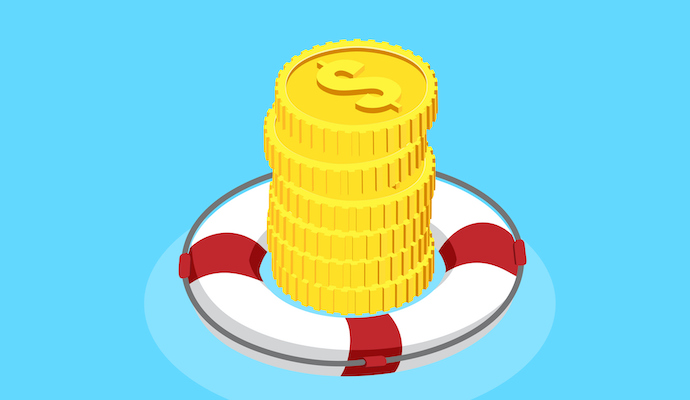How Payer SDOH Investments Balance COVID-19 Relief Versus Recovery
Humana’s $50 million COVID-19 relief and recovery funding provides insight on the challenges of supporting community partners during the uncertainties of pandemic.

Source: Getty Images
- As the COVID-19 pandemic progresses, payers are constantly reevaluating where they can best direct relief and recovery funding.
For more coronavirus updates, visit our resource page, updated twice daily by Xtelligent Healthcare Media.
When Humana looked to donate $50 million toward coronavirus response efforts, one of the big questions that the payer encountered—and a factor that distinguishes this donation from pre-COVID-19 donations—is the nature of relief versus recovery investing.
This is a uniquely crisis-period question to ask and it is layered with uncertainty, as no one truly knows when the pandemic recovery stage will end.
“The idea of emergency relief being separated from recovery and rebuilding really is something that we continue to explore,” Walter Woods, chief executive officer of the Humana Foundation, in an interview with HealthPayerIntelligence.
READ MORE: BCBSM, Humana Waive Medicare Advantage Costs as States Reopen
“We recognize that the situation we're in now will eventually evolve into something else. So we want to be able to help people bridge those immediate gaps that they have now, but recognize that after they get through that there are going to be other phases that have needs that we want to be more intentional about.”
Humana decided to split the $50 million donation between short-term and long-term efforts in response to the novel coronavirus. Of the total sum, $34 million went toward immediate relief and the remaining $16 million will be contributed to recovery actions.
In the beginning, emergency funding is about being prepared, Woods stressed. Then, by preparing vulnerable populations, Humana sought ways to build up resiliency, identifying populations that would not rebound as quickly and channeling support and resources to them through Humana’s partners. During the crisis, Woods said, Humana’s funding approach has had to be more strategic and long-term than in normal times.
Discerning which communities and organizations could best utilize the funding is a challenge in normal seasons, but with a pandemic, the stakes are even higher.
“This is really tough work. A lot of people think that it's easy to make these decisions when it comes to giving away money, but it really isn't about that. It's about developing relationships that allow us to think differently about the solutions,” Woods said. “There are so many ways that you can invest, especially when you have this amount of money. And so you have to put a stake in the ground and feel comfortable with that.”
READ MORE: Humana Calls for Social Determinants of Health in Risk Adjustment
For Woods and the Humana Foundation, the ground they staked out for this donation was to support the working family who may have multiple jobs for their income and still struggle financially.
With that in mind, the payer focused on social determinants of health that it had already identified as crucial for this population. Specifically, Woods and his team chose four areas to invest in: food security, community-based organizations, behavioral healthcare, and barriers that essential workers face.
However, Woods particularly emphasized that, of these, food security was a topmost priority during the coronavirus. Barriers regarding food insecurity during the coronavirus outbreak have stemmed not from a lack of food, but rather a lack of access to food, he clarified. That was a gap that Humana sought to bridge by funding both existing partnerships and brand new ones.
Approximately a third of the organizations that will receive a portion of this $50 million donation are new relationships that the Humana Foundation developed as a result of the pandemic.
For example, Humana’s Bold Goal communities are connections with community foundations. Some of these relationships had only recently been formed and Humana had not yet tapped into their perspective and needs.
READ MORE: Cigna, Humana Eliminate Coronavirus Treatment Out-Of-Pocket Costs
Humana developed its Bold Goal commitment in 2015 to improve overall health by 20 percent in 14 communities, all within five years. Each community has a community foundation that is aware of that population’s needs. The payer has seen positive results in the past couple of years in the original communities and the program has continued to expand.
Three of the 14 are new Bold Goal communities who offer a fresh perspective on how Humana can support those communities. Wood shared that these new partners particularly stressed food insecurity as an issue that Humana’s resources could go towards. The payer’s donation will also serve to build capacity for community foundations as local residents lean into their foundations for coronavirus-related support.
Following the pandemic, Woods anticipated that payers would continue to invest in social determinants of health and would focus their funding efforts on being collaborative and integrating services. The goal, he indicated, would be for community members to experience holistic care as they move from one organization to the next, garnering support for their social determinants of health needs.
